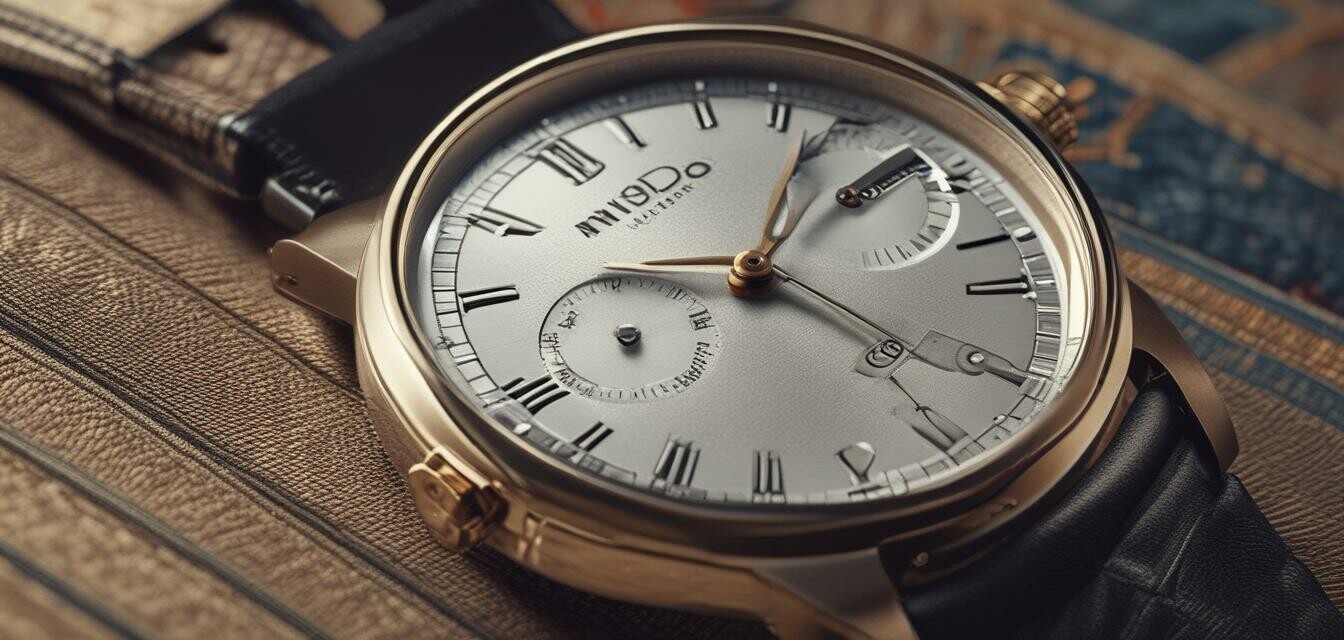
The Importance of Regular Servicing for Your Mido
Key Takeaways
- Regular servicing extends the lifespan of your Mido watch.
- Professional care helps maintain its performance and accuracy.
- Understanding the servicing schedule ensures timely maintenance.
- Proper care enhances the value of your luxury watch.
- Always choose authorized service centers for repairs.
Owning a Mido watch is an investment in luxury and precision engineering. Regular servicing is essential to ensure your watch maintains its optimal performance, accuracy, and aesthetic appeal. This article delves into the importance of regular servicing for your Mido timepiece, how often it should be done, and what to expect during the process.
Why Regular Servicing is Crucial
Just like any mechanical device, watches require maintenance to function well over time. Mido watches, known for their engineering marvels and exquisite designs, are no exception. Here are some reasons why regular servicing is essential:
- Preservation of Quality: Servicing helps maintain the exquisite craftsmanship that Mido watches are known for.
- Accuracy: Regular checks and calibrations ensure that your watch keeps accurate time.
- Longevity: Preventative care can significantly extend the life of the movement and components.
- Value Retention: A well-maintained Mido watch keeps its value and is more appealing to future buyers.
What to Expect During Service
When you service your Mido watch, there are several standard practices that a professional will follow:
| Service Step | Description |
|---|---|
| Disassembly | The watch is taken apart to assess its condition and identify any issues. |
| Cleaning | All components are meticulously cleaned using specialized solutions. |
| Lubrication | New lubricant is applied to ensure smooth movement between parts. |
| Calibration | The watch is timed and adjusted to ensure it runs accurately. |
| Reassembly | The watch is carefully put back together, ensuring all components are functioning properly. |
| Testing | Final checks and tests to ensure the watch is performing optimally. |
When Should You Service Your Mido Watch?
Generally, it is recommended to service your Mido watch every 3 to 5 years. However, various factors may influence this schedule:
- Frequency of Use: Watches that are worn daily may require more frequent servicing.
- Environment: Humidity, temperature fluctuations, and other environmental conditions can affect watch performance.
- Noticing Performance Issues: If you observe any irregularities in timekeeping, it may be time for a service.
Maintaining Your Mido Watch Between Services
In addition to professional servicing, how you care for your watch on a daily basis can significantly impact its condition. Here are some tips to maintain your luxury timepiece:
Tips for Beginners
- Store your watch in a dry, cool place, away from direct sunlight.
- Clean the watch regularly with a soft cloth to remove dust and moisture.
- Avoid exposing the watch to strong magnetic fields.
- Be cautious with water exposure, even if the watch is water-resistant.
- Wind your automatic watch regularly if not worn for an extended period.
Choosing an Authorized Service Center
When it’s time for servicing, it is vital to choose an authorized service center. Here’s what you can expect:
- Expertise: Professionals trained specifically for Mido watches have the knowledge to handle delicate components.
- Genuine Parts: Authorized centers use original Mido parts for repairs and replacements.
- Warranty Protection: Servicing at authorized locations often keeps the warranty intact.
Conclusion
Regular servicing of your Mido watch is crucial to maintaining its luxury appeal and mechanical performance. By being proactive in care and maintenance, you can enjoy your watch for years to come and preserve its value as a timeless accessory. For more insights on maintaining luxury watches, check out our related articles on [Lifestyle and Care](https://menswatchesluxury.com/blog/lifestyle-and-care) or [Buying Guides](https://menswatchesluxury.com/blog/buying-guides).
Pros
- Ensures accurate timekeeping.
- Extends the lifespan of the watch.
- Maintains aesthetic quality.
- Retains the watch's value over time.
Cons
- Costs associated with regular servicing.
- Inconvenience of sending the watch for service.
- Potential wear during disassembly and reassembly.

